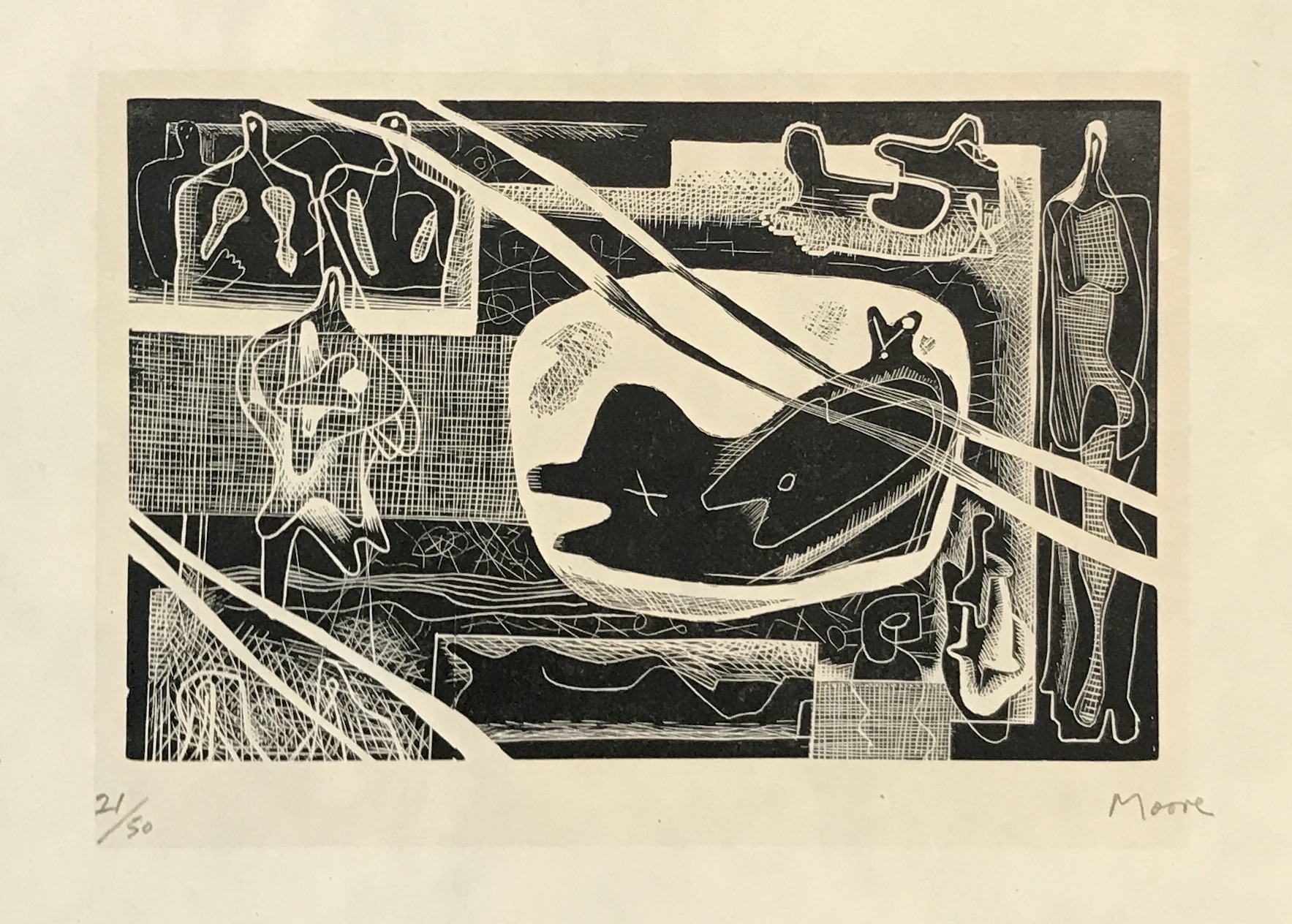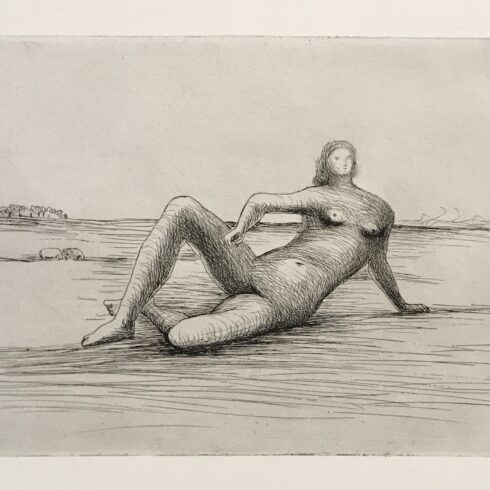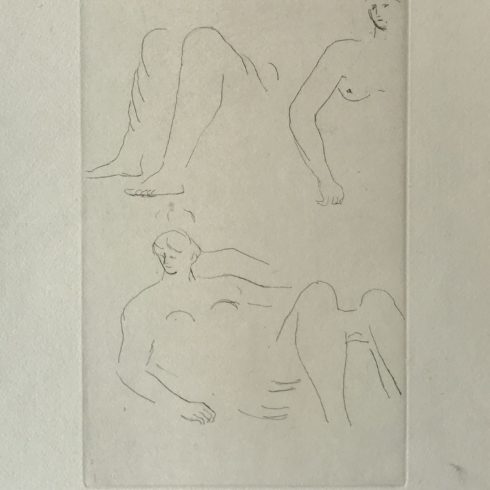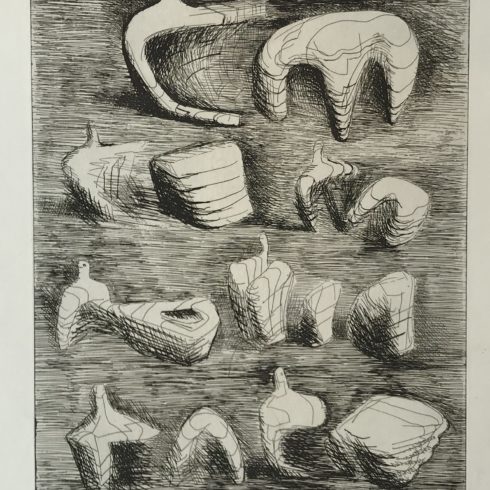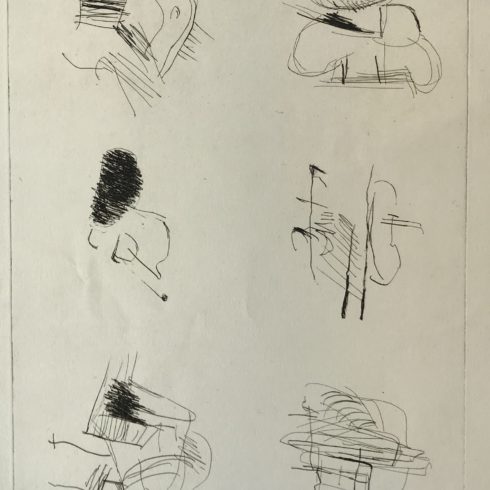Henry Moore – Figures Sculptures
Henry Moore, Figures Sculptures is an original Woodcut print on Japon Nacré paper from 1931. It is signed in pencil lower right, and numbered from the edition of 50 in the lower left. Published by Gérald Cramer, Geneva, 1966. Printed by Fequet and Baudier, Paris. Cramer 1.
Much of Moore’s early work was direct carved, rejecting the academic tradition of modelling in favor of the doctrine of ‘truth to materials’—according to which the nature of the stone or wood—its shape, texture, and so on, was part of the conception of the work. According to Moore “…a work must have a vitality of its own. I do not mean a reflection of the vitality of life, of movement, of physical action, frisking dancing figures, and so on, but that a work can have in it a pent-up energy, an intense life of its own, independent of the object it may represent. When a work has this powerful vitality we do not connect the word Beauty with it. Beauty, in the later Greek or Renaissance sense, is not the aim in my sculpture.”
In the 1930s Moore was a member of Unit One, a group of advanced artists organized by Paul Nash, and was a close friend of Barbara Hepworth, Ben Nicholson, and the critic Herbert Read. From 1932 to 1939 he taught at the Chelsea School of Art. He was an important force in the English Surrealist movement, although he was not entirely committed to its doctrines; Moore participated in the International Surrealist Exhibition at the New Burlington Galleries, London, in 1936.
| Title | Figures Sculptures |
|---|---|
| Medium | Woodcut |
| Year | 1931 |
| Edition | 50 |
| Signature | Signed, numbered |
| Catalogue Raisonné | Cramer 1 |
| Size | 10 x 14 (in) 25 x 36 (cm) |
| Price | SOLD |
Description
Henry Moore, Figures Sculptures is an original Woodcut print on Japon Nacré paper from 1931. It is signed in pencil lower right, and numbered from the edition of 50 in the lower left. Published by Gérald Cramer, Geneva, 1966. Printed by Fequet and Baudier, Paris. Cramer 1.
Much of Moore’s early work was direct carved, rejecting the academic tradition of modelling in favor of the doctrine of ‘truth to materials’—according to which the nature of the stone or wood—its shape, texture, and so on, was part of the conception of the work. According to Moore “…a work must have a vitality of its own. I do not mean a reflection of the vitality of life, of movement, of physical action, frisking dancing figures, and so on, but that a work can have in it a pent-up energy, an intense life of its own, independent of the object it may represent. When a work has this powerful vitality we do not connect the word Beauty with it. Beauty, in the later Greek or Renaissance sense, is not the aim in my sculpture.”
In the 1930s Moore was a member of Unit One, a group of advanced artists organized by Paul Nash, and was a close friend of Barbara Hepworth, Ben Nicholson, and the critic Herbert Read. From 1932 to 1939 he taught at the Chelsea School of Art. He was an important force in the English Surrealist movement, although he was not entirely committed to its doctrines; Moore participated in the International Surrealist Exhibition at the New Burlington Galleries, London, in 1936.
Additional information
| Title | Figures Sculptures |
|---|---|
| Medium | Woodcut |
| Year | 1931 |
| Edition | 50 |
| Signature | Signed, numbered |
| Catalogue Raisonné | Cramer 1 |
| Size | 10 x 14 (in) 25 x 36 (cm) |
| Price | SOLD |


